efficient, reliable, convenient, and safe
multi-user storage of
and access to massiveamounts of persistent data.
FindSlide.org - это сайт презентаций, докладов, шаблонов в формате PowerPoint.
Email: Нажмите что бы посмотреть
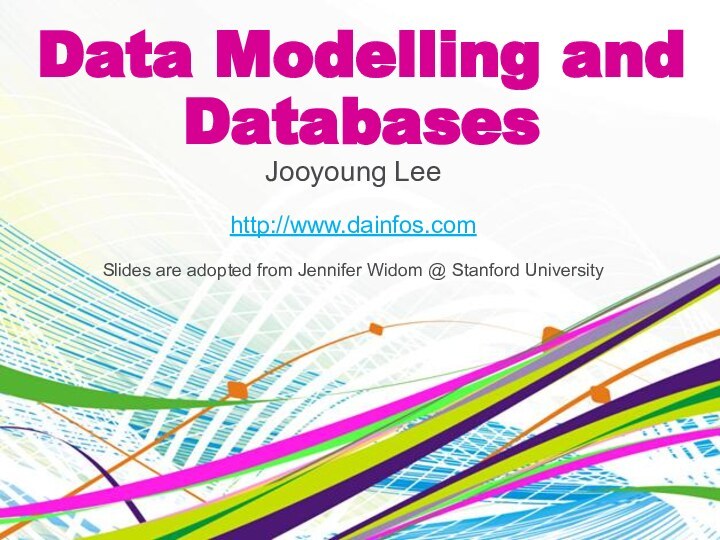
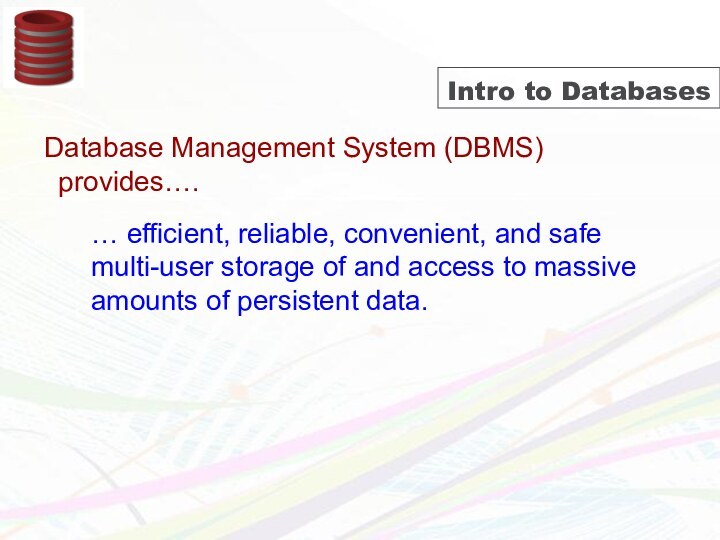





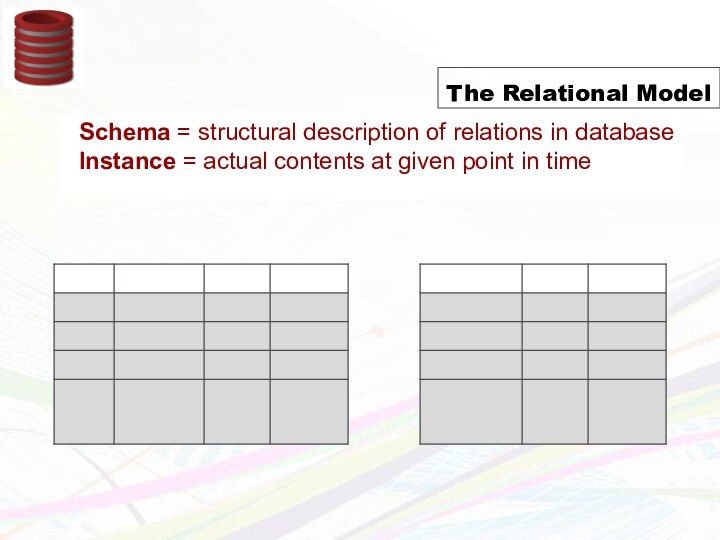
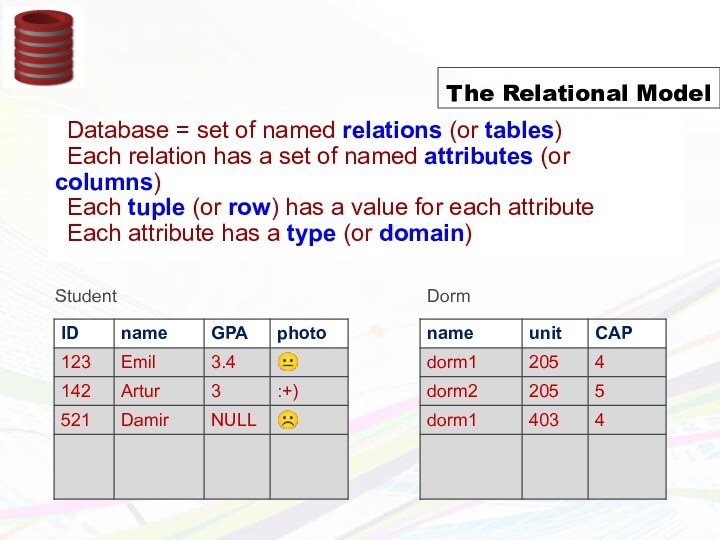



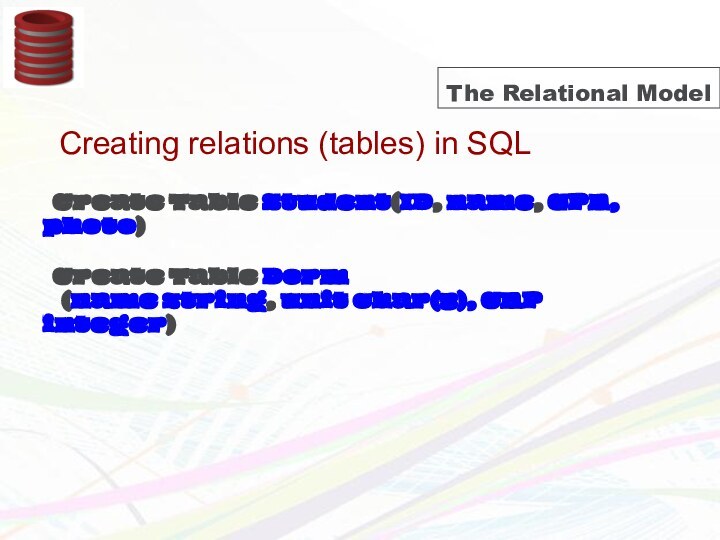

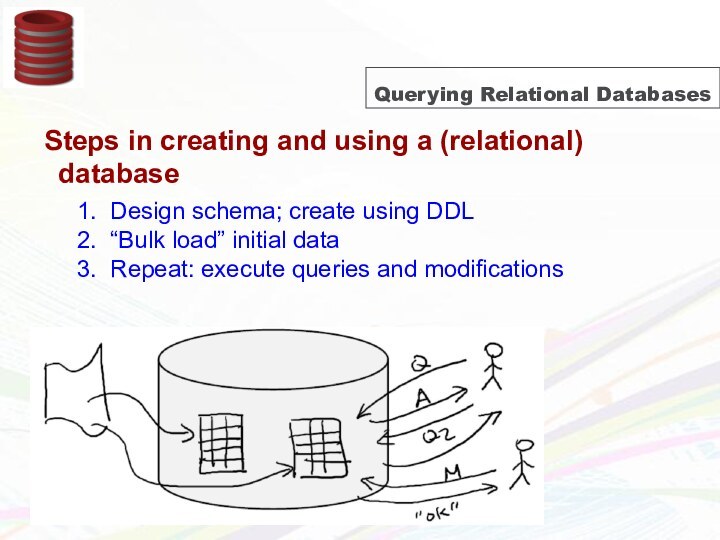
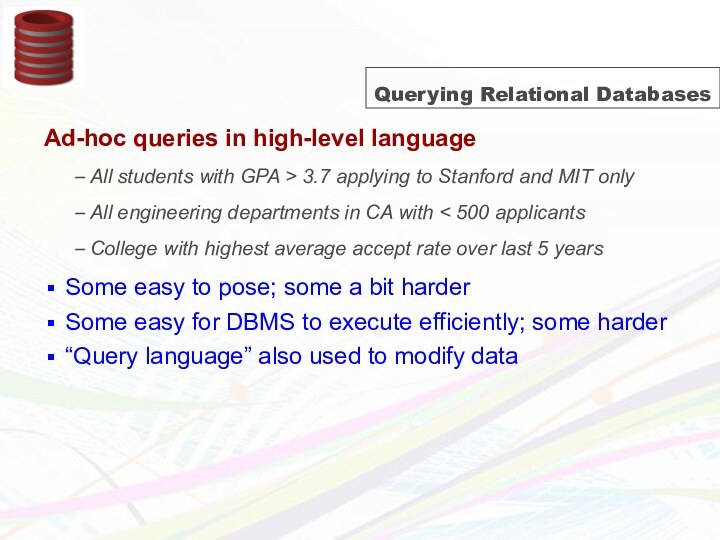
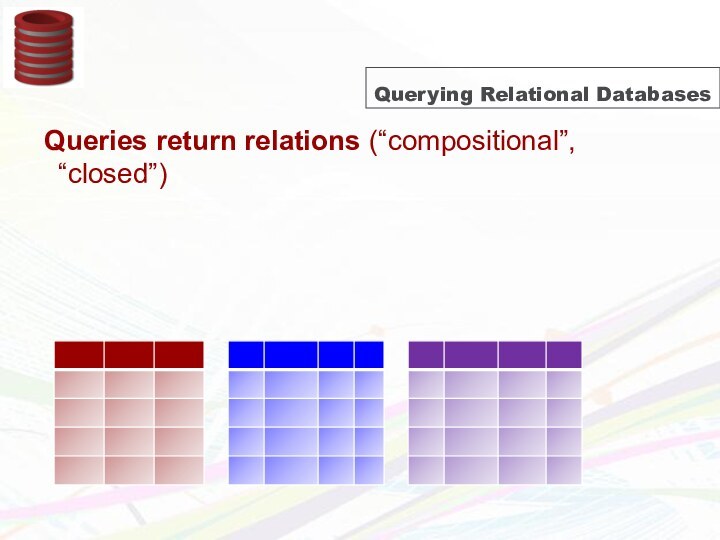
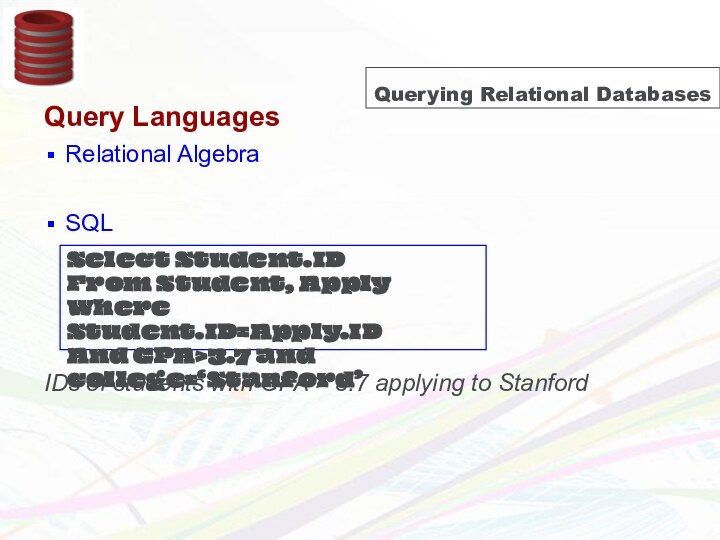
![Intro to databases database management system Assignment 1Write one page essay in latex [sharelatex.com] that includes the followings:Your](/img/tmb/15/1405004/4bd9008179cfb2521469ebaa26d6f7fc-720x.jpg)

The Relational Model
Student
Dorm
The Relational Model
Schema – structural description of relations in database
Instance – actual contents at given point in time
Student
Dorm
The Relational Model
Schema – structural description of relations in database
Instance – actual contents at given point in time
NULL – special value for “unknown” or “undefined”
Student
Dorm
The Relational Model
Schema – structural description of relations in database
Instance – actual contents at given point in time
NULL – special value for “unknown” or “undefined”
Key – attribute whose value is unique in each tuple
Or set of attributes whose combined values are unique
Student
Dorm